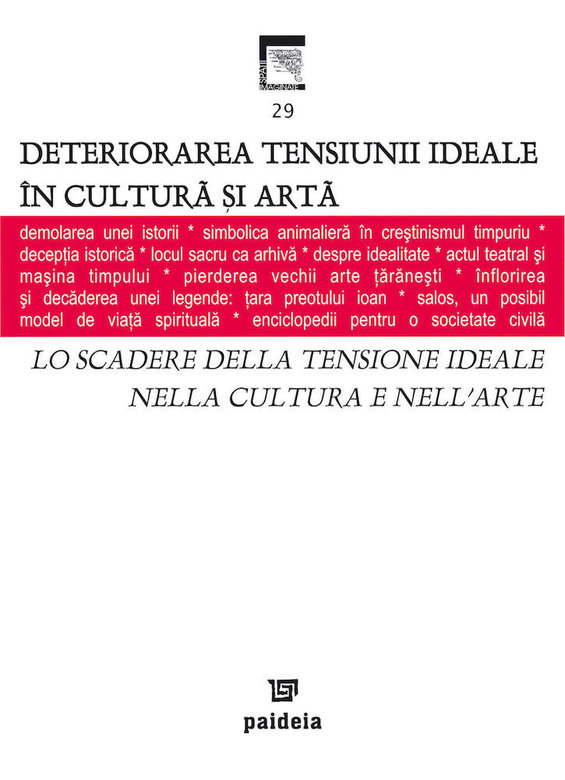“Bucureștiul sfârșitului de secol XX și demolarea unei istorii” (The Bucharest of the end of the twentieth century and the demolition of a history) is the title of the study published by Prof. Alexandru Barnea in the Italian–Romanian bilingual volume Deteriorarea tensiunii ideale în cultură și artă (The diminishing of ideal tension in culture and art). In this study, the author inventories some of the most important areas and buildings along the Izvor–Mihai Vodă–Uranus axis in Bucharest that came to be mutilated or completely destroyed as a result of an extensive project of reconfiguring this vast urban zone in the centre of the Romanian capital. In addition, the study provides a short overview of the history of the areas under discussion, and at least one old photograph is published for each of them, so that it is possible to see how they looked before the demolition.
In the order in which they are discussed, the areas and historic buildings treated in the study are: the former Piața Națiunii, the State Archives, and the Mihai Vodă church, the gateway on the plateau of the “Burnt Court” in the immediate vicinity of the National Archives, Str. Uranus, Biserica Albă–Postăvari, an old house on Str. Antim, the Domniţa Bălaşa church, the Brâncovenesc hospital, the Mina Minovici Institute of Forensic Medicine, the Mihai Vodă hill. All thirteen photographs reproduced in the study come from Alexandru Barnea’s private collection and were taken by him. The volume was published in 2004 by Editura Paideia, with the support of the Italian Cultural Institute in Bucharest, under the coordination of Henry Mavrodin.

